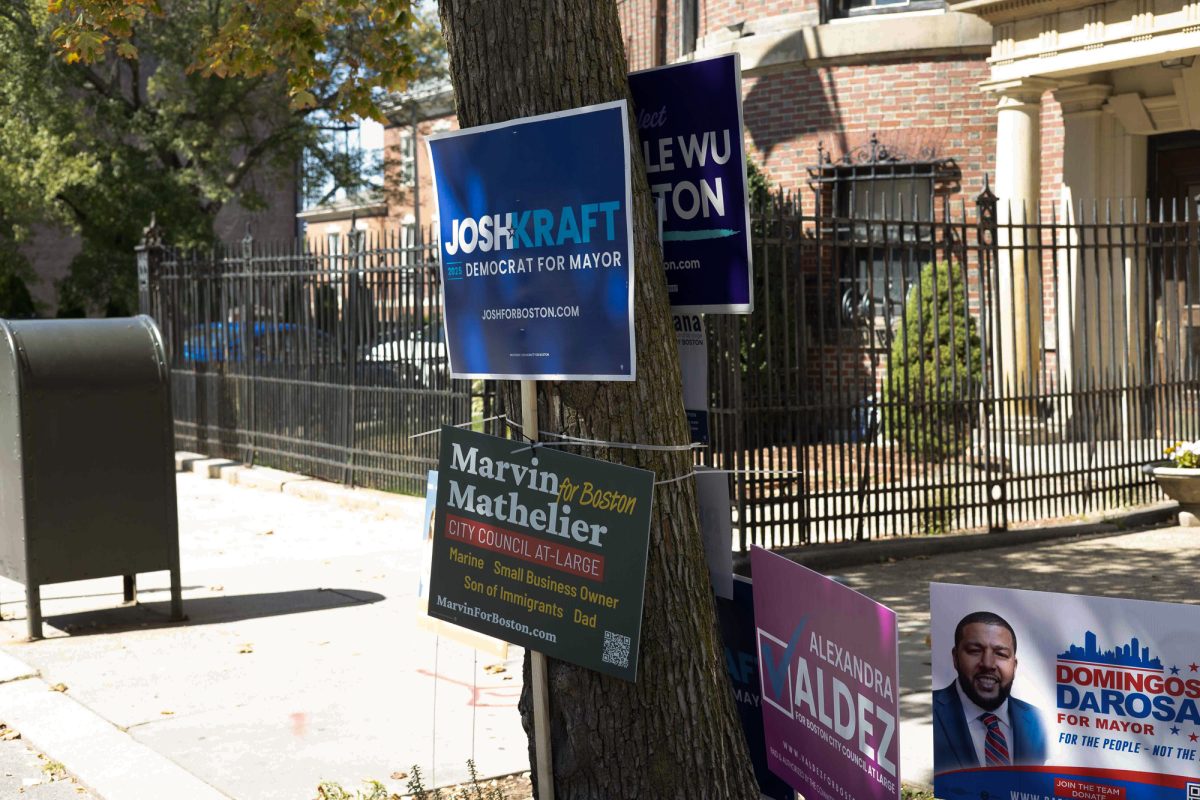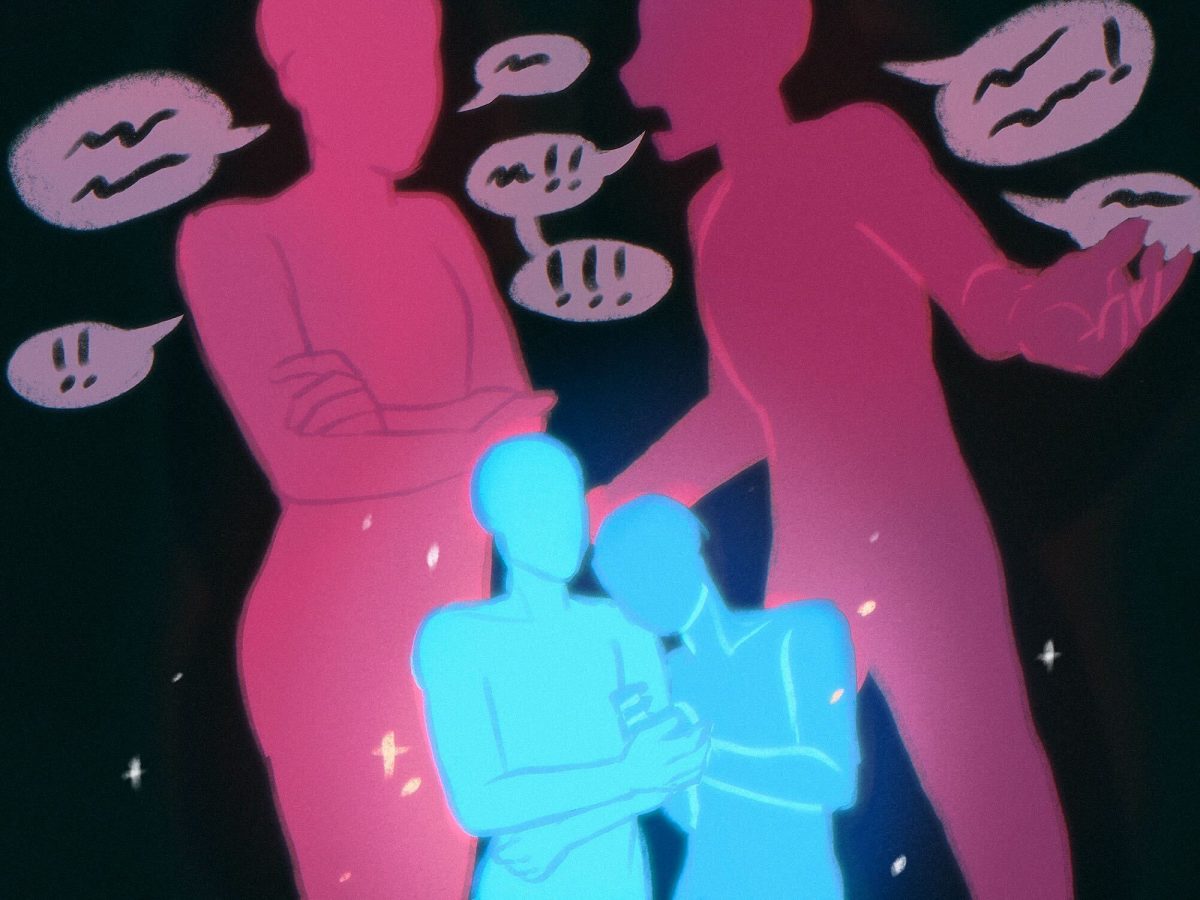Pepsi changed their logo and label design in the past year, making the new symbol less symmetric and their labels less cluttered with font. The move was made to help Pepsi connect with a new generation of consumers, including college students according to a Pepsi spokeswoman.
However, one demographic Pepsi does not need to worry about reaching is the Boston University student population.
Pepsi products can be purchased in every dining hall, vending machine, and athletic concession on BU’s campus. Meanwhile, no products of Pepsi’s main competitors are to be found in those same locations. The abundance of Pepsi products on campus is the result of a beverage contract between the university and the beverage company that began in 1998 and expires in 2013.
The beverage company’s contract with BU is one of over 750 contracts Pepsi has with colleges across the country. These contracts, which promise Pepsi exclusivity on campuses, have been a key component of Pepsi’s success in reaching young adults.
‘College students are an important audience to us, and we will continue to find ways to connect with them where they are,’ Pepsi spokeswoman Nicole Bradley said in an email.
In addition to providing soda to BU, Pepsi also supplies water bottles and sport drinks in vending machines and the fruit drinks in the dining halls. In return, the company receives advertising opportunities on BU-owned property, including Agganis Arena.
College students make an ideal demographic for cola companies, according to marketing experts. Susan Fournier,’ School of Management professor in marketing, said habits usually form after four years, and that cola has other properties especially appealing to college students.
‘If you think about who’s going to want caffeinated beverages, people studying are as good as it gets,’ Fournier said.
Contracts with colleges allow Pepsi to get its products in the hands of college students, Fournier said, in the hopes that product distribution will lead to long-term Pepsi consumers.
‘Any distribution you get is going to make your brand expand,’ she said.
This is a marketing approach that first gained traction during WWII, when Coke made its beverages available to American soldiers, Fournier said.
‘When Coca-Cola was growing, the owner’s goal was to be ‘in the arm’s reach of desire,” Fournier said. ‘Soldiers would say, ‘We’re fighting for freedom and the right to drink Coca-Cola.”
But to inspire loyalty among a group, it’s not enough to simply make your beverage widely available, according to experts ‘-‘- which is why cola companies like Pepsi also rely on re-branding.
NEW BRAND
An expert in the advertising magazine Ad Age estimated that it cost Pepsi several hundred million dollars to the change its logo and labels. Bradley said the change was necessary to give the Pepsi brand a new and engaging feel.
‘There is a new dynamism to the Pepsi logo ‘-‘- it’s more alive,’ she said. ‘The wave is taking on a life of its own, appearing more open and closed across the Pepsi trademark.’
Bradley also said the brand changes were made because Pepsi felt that it needed to offer a fresh conversation between its consumers and its products.
‘There is no rule or special timing that dictates how often we change our campaigns or packaging,’ Bradley said. ‘When we feel that dialogue or our conversation needs to be refreshed, we make a change.’
John Verret, a advertising professor in the College of Communication, believes brand changes like Pepsi’s have more of an effect inside a company than in the wider world.
‘I think that they’re talking to themselves,’ Verret said. ‘I don’t think it [the logo] makes a darn bit of difference to consumers.’
BUT WHAT DO YOU THINK?
Other marketing experts disagree with this assessment. Fournier said brand updates are necessary to keep up with the contemporary consumer.
‘I think of design updates like having to get your car updated,’ Fournier said. ‘At some level, brands have to keep current.’
Ronald C. Curhan, Marketing Professor Emeritus at BU and a former consultant to both Pepsi and Coca-Cola, offered praise for the new logo.
‘It’s a bolder, more straightforward look,’ Curhan said. ‘If you don’t get initial consumer resistance, the new brand logo grows on you.’
College of Arts and Sciences sophomore Chase Baker agreed with Verret, and said he was surprised Pepsi changed their logo in a minor way.
‘I do not why they bothered changing it,’ Baker said. ‘It looks almost the same.’
CAS Senior Jeffrey Chatterton said he connected much more with the old logo.
‘Pepsi’s old logo was one of the few logos that actually coaxed me to buy a product,’ Chatterton said. ‘The new logo turns me off.’
PURSUING NICHE MARKETS
Besides rebranding their products, Pepsi also turns to the creation of niche products to connect with a wide base of consumers. These products have sometimes fallen flat.
In 1989, Pepsi began marketing a new soft drink called Pepsi A.M., a beverage similar to the original Pepsi-Cola, but with more added caffeine. The drink was meant for mornings in the place of tea or coffee.
In 1990, the product failed. A few years later, Pepsi followed this up with Pepsi Kona, a cola actually flavored like coffee. This also failed.
The list of discontinued lines goes on: Crystal Pepsi, Pepsi Blue, Pepsi Ice Cucumber.
‘They threw a party and nobody came,’ Verret said about the discontinued products.
Bradley countered that Pepsi has had many successful brand extensions, giving Mountain Dew Code Red as an example.
‘It has been our experience that a successful line extension is only developed when it is created from a strong brand that is popular with consumers,’ Bradley said. ‘Another key is getting the new line extension in as many consumer hands and in as many markets as possible.’
Fournier said that creating new products, even ones that seem bizarre, can pay dividends for companies.
‘The reason you build a brand is usually that you can extend that brand,’ she said. ‘At the end of the day, 15 to 20 percent of the growth on a yearly basis is due to new products.’
Fournier also said that consumers often prefer new products that have old brand names, pointing to brand extension successes like Mountain Dew and Diet Pepsi.
Curhan said brand extension in soft drinks is a result of the Pepsi-Coke rivalry.
‘They really can’t stay still, because then they feel they’re going to lose something to their competition,’ Curhan said. ‘You have to give them both credit for trying to expand their penetration of the market by making niche beverages.
‘Look at how many flavors and different colors they come out with trying to make Gatorade more than a sickly yellow drink,’ he said. ‘Gatorade and other sports drinks did not exist until 30 years ago. There was no product.’
SPREADING THE WORD
When one of these niche products is released, the next step is getting the word out through marketing ‘-‘- something that often has very little to do with the products themselves.
Pepsi has consistently turned to celebrities to market their products. Pepsi Blue advertisements featured Britney Spears wishing people ‘a happy Pepsi Blue Christmas.’
Peter Morrissey, a COM professor of mass communications, said that many of the products Coke and Pepsi offer taste almost identical to each other, so they turn to marketing strategies to differentiate their products.
‘Pepsi tastes a little bit sweeter, but marketing on a taste dimension is very difficult to do,’ Morrissey said. ‘What you are usually competing on is branding and associations with that brand.’
Fournier said while Coke once had the ‘magic’ appeal to young people, Pepsi, despite its smaller market share, has it today.
‘I’d Like to Teach the World to Sing’ and polar bears, they were part of Coke’s appeal,’ Fournier said. ‘Now Pepsi feels more with the culture.’
Allyson Galle, CAS sophomore, said she is not a fan of the advertising Pepsi’s directed at her generation, from the label change to text message promotions.
Nevertheless, like many students at BU, the Coke fan said she drinks more Pepsi.
‘Pepsi is available and Coke is not,’ she said.


















































































































null • Aug 3, 2010 at 2:22 pm
“I’d Like to Teach the World to Sing’ and polar bears, they were part of Coke’s appeal,” Fournier said. “Now Pepsi feels more with the culture.”<p/>I agree with Allyson Galle. I am not a fan of Pepsi’s advertising. I am and always will be a Coca Cola person. I love the Coca Cola polar bears, especially when they make their appearances during the Holidays every year.<p/>I wish there were Coca Cola products available. Since they’re not, for the most part I do not drink soda. I do enjoy some Pepsi products such as Mountain Dew and Sierra Mist, but when it comes to Pepsi Cola versus Coca Cola, the c-squared drink wins every time.